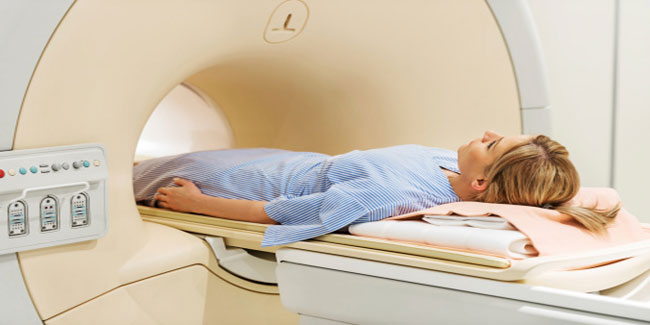
Magnetic Resonance Imaging or MRI is a noninvasive technique provides pictures of organs and tissues using radios waves, computers and magnets. An MRI machine appears like a long, narrow tunnel that has a sliding bed in it. The patient lies down on the sliding bed which moves towards the tunnel to allow the scanner to take high quality detailed pictures of the organs or particular parts of the body. The MRI test doesn't use any sort of radiation and is considered much safer than other tests.
Table of Content:-

The doctor may also inject a contrast dye into the vein before the chest MRI. The dye reaches the chest and allows the MRI scanner to take even more detailed pictures of the chest. The dye doesn't contain iodine or cause any side-effects. Although, it may feel a little discomforting initially, the procedure is completely harmless.
Why Is It Done?
If a doctor wants to check if there is something wrong in the chest region that cannot be determined by physical examination or other tests, he/she will recommend a chest MRI. It's usually done to look for blocked blood vessels, injury, heart problems, lymph nodes, tumors and other structures in the chest. It is also common to get a chest MRI test done in order to better understand and verify the results of other tests such as chest x ray and chest CT scan. If doctors believe that the chest problems are severe, they may recommend the chest MRI even before other tests.
What Does Chest MRI Show?
The chest MRI uses radio waves and magnets to provide detailed information about the patient's chest to the computer. The inbuilt computer converts the information into high quality still or moving pictures. The pictures from chest MRI are usually black and white and can clearly show a tumor, blood vessels, lymph nodes, or other chest conditions. The chest MRI test is very powerful and can clearly show tissues even from under the bones.
The Risks Involved
Chest MRI is a completely safe test that usually doesn't have any side-effects. However, the contrast dye may cause some minor discomfort and reactions. Although, very rare, the possible side-effects of a chest MRI may include dizziness, nausea, headache and minor allergic reactions due to the dye. The contract dye may pose higher risks of harmful side-effects in patients who have a severe kidney condition.

While the test is considered very safe, it can pose a high risk for pregnant women. The doctors take extra precaution when attending to pregnant women as the chest MRI can harm her and the baby. Doctors also avoid recommending chest MRI to pregnant women during their first trimester, unless very important. It is also avoided for mothers who are breastfeeding. If the MRI is necessary, doctors will be very careful with the use of contrast dye as it can be passed to the baby through the breast milk. In such cases, doctors usually recommend saving and storing breast milk for 24 to 48 hours before the test. After the test, the mother can then feed the breast milk to her baby through a bottle.

If a person uses transdermal patches to take medicines then it may cause problems during the procedure. Such patches usually contain metals like aluminum that may cause skin burns during the MRI test. The chest MRI may also pose higher risks for people with metal objects in the bones or other metal implants in the body. It can also be discomforting for people who are afraid of tight or closed spaces.
Image Courtesty: Getty
Read more articles on Understand Chest MRI
How we keep this article up to date:
We work with experts and keep a close eye on the latest in health and wellness. Whenever there is a new research or helpful information, we update our articles with accurate and useful advice.
Current Version